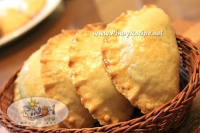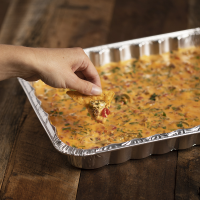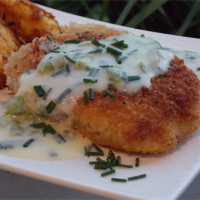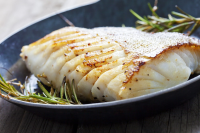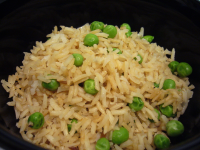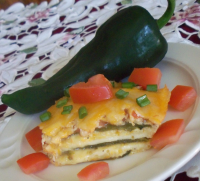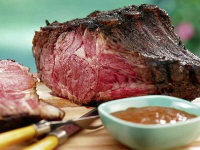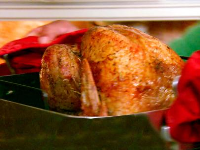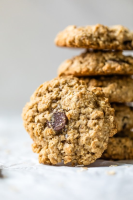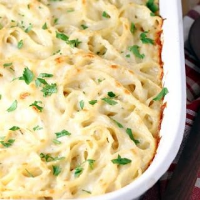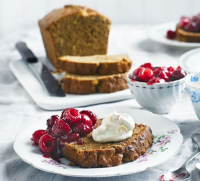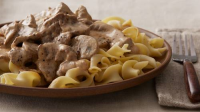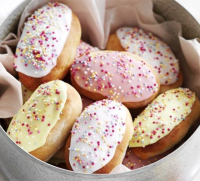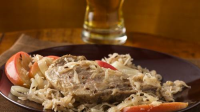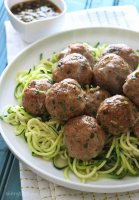CANDY MAKING TIPS | JUST A PINCH RECIPES
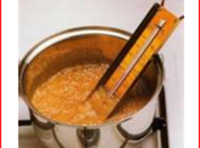
The holiday season when we make candy for our friends and family is quickly coming upon us and I have acquired alot of candy making tips that could help everyone this holiday. Most of these tips were found on various internet sites like WWW.tipnut.com , www.betterhomesand garden.com , www.tasteofhome.com and various instructions that I have used through out the years of my candy making..
Provided by Karla Everett @Karla59
Categories Candies
Number Of Ingredients 1
Steps:
- So you’ve decided to start making candy at home—great! Whether you’re a novice in the kitchen or an experienced cook looking to try your hand at candy, these tips and instructions will provide some of the information you need to get started.
- Common Candy Ingredients** There are two main factors that affect the taste of your candy: the ingredients you use and the procedure you follow. By educating yourself about common candy ingredients such as chocolate and sugar, and by selecting the best ingredients you can find, you will go a long way toward ensuring successful, delicious candy.
- Working With Sugar** There is nothing terribly mysterious or complicated about making candy, but if you are new to the world of confectionery, you might find some of the recipe instructions confusing. Candies that are based on a sugar syrup—sugar and water boiled together—often give instructions to boil the syrup to a specific temperature. To make these recipes, you will either need a candy thermometer, or will need to be familiar with the “cold-water method” of temperature checking. Some traditional recipes call for the candy to be “pulled,” as in taffy or ribbon candy. Pulling candy takes a little practice.
- Working With Chocolate** After sugar, chocolate is probably the most common candy ingredient, so it is important to know how to successfully work with chocolate.
- Equipment for Making Candy** In general, candy making does not require much in the way of specialized equipment. Many candies can be made using basic kitchen tools that most people already possess. But there are a few tools that reappear in recipes over and over again, like a candy thermometer, and if you anticipate making candy on a regular basis, it will be helpful to familiarize yourself with the most commonly used candy and chocolate equipment.
- It's actually quite easy to make candy from scratch if you keep in mind these pointers. Make sure that you test your candy thermometer before each use by bringing water to a boil; the thermometer should read 212°. Adjust your recipe temperature up or down based on your test.
- Measure and assemble all ingredients for a recipe before beginning. Do not substitute or alter the basic ingredients.
- Use heavy-gauge saucepans that are deep enough to allow candy mixtures to boil freely without boiling over.
- For safe stirring when preparing recipes with hot boiling sugar, use wooden spoons with long handles.
- Humid weather affects results when making candy that is cooked to a specific temperature or that contains egg whites. For best results, make candy on days when the humidity is less than 60%. Humidity affects the preparation of divinity and nougat to such an extent that you should plan to make these two candies on a relatively dry day. If the day is humid, no amount of beating will make these two candies set up.
- Store homemade candies in tightly covered containers unless otherwise directed. Don't store more than one kind of candy in a single container. Stored in an airtight container in a cool, dry place, most homemade candy will keep for about 2 to 3 weeks. Fudge and caramels can be wrapped tightly and frozen for up to 1 year. Always store different types of candy in separate containers, using waxed paper between layers. This will keep candies from exchanging flavors. If hard candy and soft candy are not stored separately, the moisture from the soft candy will cause the hard candy to become sticky.
- Before you begin Although it's important to read and thoroughly understand any recipe before you begin, with candy recipes, it is essential.****** Start by reading the recipe through and noting (1) what equipment is needed, (2) how much attention is required, (3) how long it will take to cook, and (4) if any cooling, beating, and/or drying time is required. Be sure to use the proper equipment and allow plenty of time to prepare the recipe successfully. Don't be fooled into thinking that a short recipe is necessarily going to take little effort or be fast to prepare.
- assemble all of the equipment you'll need and measure all of the ingredients. For example, have the walnuts chopped before the fudge recipe says to beat them in. The time it takes to chop the nuts is too long for the fudge to sit idle.
- Measure accurately, and don't make substitutions for basic ingredients. Never alter quantities in candy recipes. Do not halve or double recipes; the proportions have been worked out for the recipes as they are printed. The only safe way to double your yield for a specific recipe is to make two separate batches.
- It's recommend when cooking most candy mixtures is to butter the sides of the saucepan. This helps prevent the mixture from climbing the sides of the pan and boiling over. the next step is to combine the sugar with the other ingredients and bring the mixture to boiling. It's very important to dissolve the sugar entirely during this step. As you cook the mixture to dissolve the sugar, stir it constantly, but gently, so it doesn't splash on the side of the saucepan. This precaution helps prevent sugar crystals from forming and clumping together in the saucepan.
- If some of the candy mixture splashes on the side of the saucepan, cover the pan and cook for 30 to 45 seconds. As the steam condenses, it will dissolve any crystals that may have formed. Watch carefully, though, so that the candy mixture doesn't boil over. (Candy mixtures using milk products or molasses should not be covered; they foam if steam cannot escape, and may boil over.)
- After the sugar is dissolved, carefully clip the candy thermometer to the side of the saucepan. (Always check the thermometer's accuracy before you begin.) For an accurate reading, be sure that the bulb of the candy thermometer is completely covered with boiling liquid, not just with foam, and that it does not touch the bottom of the pan. Always read the thermometer at eye level.
- When cooking candy mixtures, it is extremely important to keep the mixture boiling at a moderate, steady rate over the entire surface. Many recipes suggest rangetop temperatures for cooking the candy mixtures. If you use this information as a guide, you'll be able to maintain the best rate of cooking for optimum results. Because every rangetop heats differently, however, you also will have to rely on knowledge of your rangetop to judge whether you'll need to use a slightly higher or lower temperature to cook the candy mixture within the recommended time.
- Use a heavy saucepan that has high sides and the inside is smooth.
- Stir: Always stir until the sugar is dissolved. One sugar crystal can cause the whole mixture to be grainy.
- Beating: Beating is made easier by first cooling cooked mixture without stirring to lukewarm (110°F.). Use a buttered pan or platter. Always have pan ready before making candy.
- Testing Candy: It’s best to use a candy thermometer, but if you don’t have one you can do the cold water test.
- Don´t get burned! To avoid getting burned while making candy, attach your candy thermometer to a wire whisk and lay the whisk across the top of your cooking pan.
- For a candy making surface that can take the heat, use a sheet of aluminum foil. Spread candies such as peanut brittle, fudge, or almond bark in a thin layer on a foil-lined cookie sheet. Cool the candy at room temperature or in the refrigerator and then gently remove from the foil.
- Thermometer Test: Clip the candy thermometer to the pan after syrup boils. The bulb of the thermometer must be covered with boiling liquid.
- Uncooked candies can be as rich and creamy as cooked candies. Truffles and nut clusters are examples of uncooked candies. The ingredients are mixed, then either shaped into balls, coated or pressed into pans or molds. Ingredients typically used for uncooked candies are fruits, nuts, sweetened condensed milk, evaporated milk, powdered sugar, marshmallows and extracts. Some uncooked candies are mixed and topped or coated with melted chocolate. While a heat source is needed to melt the chocolate, these candies are still considered uncooked.
- Most of the classic candies, such as fudges, fondants, caramels, toffees and brittles, are cooked candies. Cooked candies are formed from a boiling syrup made from sugar, a liquid, and a variety of ingredients for flavor. They are prepared the conventional way on the range top in a heavy saucepan and cooked to the proper temperature. Care should be taken when boiling syrup because the hot syrup can cause serious burns if spilled or spattered.
- Butter, not margarine, should be used in most candy recipes to ensure the best texture and results. Butter also contributes flavor to candies. Today many margarines have added water to decrease the amount of fat they contain. Margarine-type products marked as "spreads" or those that come in tubs should not be used because their water content will cause melted chocolate to become stiff and grainy. Also, the added water will change cooking times for cooked candies. If you must use margarine, use only stick products labeled as margarine.
- There are two main factors that affect the taste of your candy: the ingredients you use and the procedure you follow. By educating yourself about common candy ingredients such as chocolate and sugar, and by selecting the best ingredients you can find, you will go a long way toward ensuring successful, delicious candy.
- Just as you should always read the recipe thoroughly before attempting to make any candy, you should familiarize yourself with unknown terms, ingredients, and procedures you may find in new recipes.
- Most of the tools needed to make candy can be found in a well-stocked kitchen: A medium-sized saucepan with a heavy bottom and straight sides. It should be large enough to hold 3 to 4 times the volume of the ingredients; this will help prevent boil-overs A bowl, large enough to hold the saucepan, lets you cool the candy while it's still in the pan. The temperature of the sugar mixture continues to rise even after it has been removed from the heat. Immersing the pan in cold water or an ice water bath stops the cooking at just the right time A long-handled wooden spoon A pastry brush reserved exclusively for candy-making. Some recipes will call for brushing down the sides of the pan with water to prevent crystallization A good candy thermometer. Although it is possible to make candy without one, a glass candy thermometer is a must-have for beginners, and a useful tool for professionals. Choose one with a metal clamp that attaches to the side of the pan If you make candy on a more regular basis, you may want to invest in a marble slab and a copper caramel pan.
CHOCOLATE CANDY MAKING AND MOLDING: HOW-TO TIPS | JUST A ...
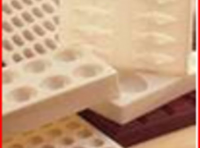
Giving homemade candies are always a nice gift to give your family and loved ones during the holiday season. Here are some candy making tips and tips on using candy molds. I think I got these tips from WWW.anocassionalchocolate.com
Provided by Karla Everett @Karla59
Categories Candies
Number Of Ingredients 1
Steps:
- If you are playing around with chocolate molding, or getting to be a real pro at it (and very addicted) it's very important to know that you used the best ingredients. Skimping here and there affects the taste and presentation of your gift!
- The biggest and most important chocolate Candy Making How-To tip: use THE best chocolate, pure vanilla, heavy whipping cream, candy coloring, candy flavorings, and other candy making supplies you can find. When you know you used the best, the praise you receive means even more.
- Candy Making How-To Tip 1 - Melting - Microwave Guittard molding chocolate in 30-second intervals using microwave safe bowls, stir in-between to distribute the heat, in order to avoid scorching the chocolate. Keep chocolate at a constant temperature to produce a smooth, professional look. You can purchase a griddle, or use your stove top and frying pan. Lay two towels on the pan or griddle before placing the chocolate filled plastic bowl.
- Candy Making How-To Tip 2 - Chocolate and water don't mix! Chocolate is oil based. Oil and water don't mix. Avoid any contact with water, including a freshly washed mold or tool - dry them first!
- Candy Making How-To Tip 3 -Truffle Ganache (center) - When making your ganache filling for your truffles, make sure the heavy whipping cream you use is at room temperature, to avoid 'freezing up' the chocolate.
- Candy Making How-To Tip 4 - Cooling - For faster cooling of the chocolate and for that fine, professional, finished look, put your mold, filled with warm chocolate, in the freezer, and dipped items in the refrigerator. Be sure do to this before they start to harden up, or the chocolate will look a bit foggy instead of shiny.
- Candy Making How-To Tip 5 - Cleaning up - Pour leftover chocolate onto a piece of waxed paper and let cool so you can break and re-melt later. For the squeeze bottles - squeeze out leftover chocolate and place squeeze bottle in freezer. When frozen, squeeze the bottle to crack the chocolate so it comes out easily. Wash everything with hot water and then towel dry instead of air dry. Do not use soap with the molds because the residue will make it so the chocolate will not easily leave the mold the next time you use it. Don't throw away the mold when you are done! Make molded crayons! Take off the wrappers of the crayons, microwave in a paper bowl or cup for 4-5 minutes until melted. Pour into mold, you can use solid colors or swirl the colors together. Put in freezer for 15-20 minutes. Makes a great gift.
- Candy Making How-To Tip 6 - Candy colors, oils, and flavors - Make sure these are oil-based so no water gets in your beautiful creation. When coloring the chocolate, don't use too much color or it will affect the taste and consistency of the chocolate. Make sure the vanilladoes not have added water; use the purest form. Use the candy paint brush or the painting/writing squeeze bottle to help you decorate!
- Candy Making How-To Tip 7 - 3-D - Always clip the 3-D molds together withbulldog clips. They are the strongest, which leaves a cleaner line and less mess.
- Candy Making How-To Tip 8 - Leftovers - After molding, always have a few things to dip in the left over chocolate. Pretzels, raisins, nuts, marshmallows, cookies, and dried fruits are all yummy when dipped in chocolate. If you have a lot of left over chocolate, it can be saved and re-melted next time you mold chocolate.
- Candy Making How-To Tip 9 - Storage - Keep chocolate in a cool place. It is moisture sensitive and absorbs odors. Do not store chocolate in the refrigerator or freezer as it will pick up off-flavors and moisture.
- Candy Making How-To Tip 10 - Don't get frustrated. If your first chocolates don't look as nice as the ones from the candy store, eat them anyway and try again! It takes some practice to master the dipping and molding skills, but you will get better the more you practice. In no time at all you will be turning out beautiful, professional-looking candies every single time.
More about "candy making tips recipes"
HARD CANDY AND LOLLIPOP RECIPE | LORANN OILS
This is LorAnn's Traditional recipe for Hard Candy.
From lorannoils.com
Cuisine American
Calories 70 per serving
From lorannoils.com
Cuisine American
Calories 70 per serving
- 7. Cool completely. Break sheet candy into small pieces and dust with powdered sugar, if desired. Store in airtight containers between waxed paper. If making lollipops, do not dust with powdered sugar, but place in sucker bags and secure with twist ties. Store hard candy in a cool, dry place. Do not refrigerate.
See details
HOW TO MAKE CANDY | ALLRECIPES
From allrecipes.com
See details
CANDY MAKING BASICS: A BEGINNERS GUIDE
Mar 19, 2019 · Equipment for Making Candy . In general, candy making does not require much in the way of specialized equipment. Many candies can be made using basic kitchen tools that most people already possess. But there are a few tools that reappear in recipes over and over again, like a candy thermometer, and if you anticipate making candy on a regular basis, it will be helpful to familiarize yourself ...
From thespruceeats.com
From thespruceeats.com
See details
CANDY MAKING TIPS & TECHNIQUES - THE SPRUCE EATS - MAKE ...
Making candy at home can feel intimidating, but we're here to help you with our most trusted techniques and tips to pull off any recipe with great success. How to Temper Chocolate. 55 mins. Ratings. Vegan Caramels. 30 mins. Ratings. Try These Quick Microwave Candy Recipes. Easy Homemade Candy Bars.
From thespruceeats.com
From thespruceeats.com
See details
THE ULTIMATE GUIDE TO MAKING CANDY | TASTE OF HOME
Sep 26, 2018 · Homemade Candy Tips. Between understanding the different sugar stages and learning how to properly temper chocolate, there are many techniques to master when you’re making your own candy. Test Kitchen tip: When you’re making candy at home, choose a day when the humidity is less than 60 percent. High humidity can affect the texture of confections like soft caramels, peanut brittle and hard candy.
From tasteofhome.com
From tasteofhome.com
See details
THE EASIEST CANDIES TO MAKE AT HOME | CANDY CLUB
Apr 22, 2020 · 9 Easy Candy Recipes Anyone Can Make Chocolate Almond Clusters. These clusters of crunchy chocolatey goodness only call for three ingredients. It can’t get much easier than that! Simply melt the chocolate (or almond bark), pour it over your almond clusters, let cool and enjoy. You’ll need:
From candyclub.com
From candyclub.com
See details
66 CANDY RECIPES YOU’LL WANT TO EAT ALL YEAR LONG I TASTE ...
From tasteofhome.com
See details
CANDY MAKING TIPS & TECHNIQUES - THE SPRUCE EATS - MAKE ...
Making candy at home can feel intimidating, but we're here to help you with our most trusted techniques and tips to pull off any recipe with great success. How to Temper Chocolate. 55 mins. Ratings. Vegan Caramels. 30 mins. Ratings. Try These Quick Microwave Candy Recipes. Easy Homemade Candy Bars.
From thespruceeats.com
From thespruceeats.com
See details
HOME CANDY MAKING TIPS AND TECHNIQUES - UWE CANDY
Select a dry weather day for cooking candy The humid day can interrupt you from making the perfect candy, so it is better to choose a dry weather day for making your candy. If you are making your candy on a rainy day, always remember to cook the candy one or two degrees higher than the temperature level mentioned in the candy-making recipe.
From uwecandy.com
From uwecandy.com
See details
MAKING CANDY - CANDY MAKING TECHNIQUES | WILTON
Well here at Wilton, we’ve got the easy-to-follow tips you’ll need to make all sorts of sweet treats, to share with family and friends. Learn how to whip-up delicious chocolate and gummy candy in no-time with help from our experts. Shop. Recipes & Ideas. Decorating Techniques.
From wilton.com
From wilton.com
See details
25 OF THE BEST EASY CHRISTMAS CANDY RECIPES AND TIPS!
Dec 08, 2021 · 25 of the Best Easy Christmas Candies Recipes And Tips. We love to make homemade Christmas candies! We only really make one cookie, Nan’s Gingerbread Men, but oh do we love to bake candies! Today, I’ve included all of our top favorite easy Christmas candies that we make every Christmas.
From livingonadime.com
From livingonadime.com
See details
CHOCOLATE CANDY MAKING TIPS, RECIPES, AND SECRETS TO MAKE ...
Chocolate Candy Making Tips, Recipes, And Secrets To Make Perfect Treats Chocolate candy making is truly a pleasure that everyone needs to experience at some point in their life. Not only will you be thrilled at what you can make, you will also treasure the way your friends and loved ones savor that delicious homemade taste.
From chocolate-candy-mall.com
From chocolate-candy-mall.com
See details
CANDY MAKING BASICS FOR BEGINNERS | CANDYWAREHOUSE BLOG
Candy-Making Tips; Tips for Successful Candy-Making; Fixing Candy Problems; Candy Recipes “Candy” can mean many things, from marshmallows, caramels, and hard candies to chocolate candies like molded chocolates, bars, and truffles. With a bit of practice, you can make any of these things and much more in your own kitchen.
From blog.candywarehouse.com
From blog.candywarehouse.com
See details
CHOCOLATE MAKING TIPS FROM A REAL CHOCOLATIER!
Candy Making Tips from a Real Chocolatier. Chocolate is a decadent dessert that has been around for centuries! While it may be readily available today at grocery stores and even gas stations, there’s a big difference between prepackaged products and artisanal chocolate candies. There are people who devote their entire careers to the study of ...
From webstaurantstore.com
From webstaurantstore.com
See details
MAKING CANDY IN A HUMID CLIMATE | BETTER HOMES & GARDENS
Jul 21, 2016 · The perfect candy-making climate has a relative humidity of less than 35 percent. But if you live in an area that's hardly ever that dry, you can always use your air conditioner or a dehumidifier for about a day or so before making candy. Because excessive softness in candy is the result of high relative humidity, you can also cook hard candies ...
From bhg.com
From bhg.com
See details
TIPS FOR MAKING CARAMELS | LAND O’LAKES
Temperature is the key in candy making. The most reliable way to know the temperature of the sugar syrup in the pan is with a candy thermometer. A candy thermometer can be purchased at most big box stores, groceries stores or kitchen supply shops. It is important to check your thermometer occasionally to make sure it is accurate.
From landolakes.com
From landolakes.com
See details
CANDY MELTS CANDY TIPS & TRICKS - WILTON
Great for cake pops, cookies, molded candies and more, Candy Melts candy is just as easy to use as it is to eat! Oil-based food coloring is the secret to coloring Candy Melts candy. With these tips and tricks on how to color and combine Candy Melts, you can customize your candy to match your needs.
From blog.wilton.com
From blog.wilton.com
See details
HOW TO MAKE MEXICAN CANDY WITH CHAMOY – THE BLUE MONKEY ...
Jan 03, 2022 · Chamoy is a popular Mexican condiment equal parts hot sauce and candy made from chili peppers, citric acid, sugar, and salt.It’s fantastic on fresh mango with a little pinch of Tajin seasoning, but you could also use it to make mangonada popsicles, smoothies, or snow cones.
From bluemonkeysports.com
From bluemonkeysports.com
See details
FOOLPROOF FUDGE TIPS - SECRETS FOR MAKING PERFECT FUDGE ...
Nov 22, 2020 · Trying to make something like caramel style fudge requires a very good quality candy thermometer for best results. Cool first, then beat the fudge . Once you have made sure to cook the fudge to the desired temperature, remove it, allow it to cool, undisturbed, to 110ºF and then beat it vigorously.
From thegardeningcook.com
From thegardeningcook.com
See details
CANNABIS INFUSED HARD CANDY - EASY RECIPE & TIPS
Mar 08, 2021 · Candy Making 101. At its heart, candy making is about taking a form of sugar and melting it while reducing or removing any liquids it might be mixed with. As the sugar melts, the sucrose molecules within begin to break apart, eventually leading to caramel (or burned sugar) if left on the heat.
From highthere.com
From highthere.com
See details














